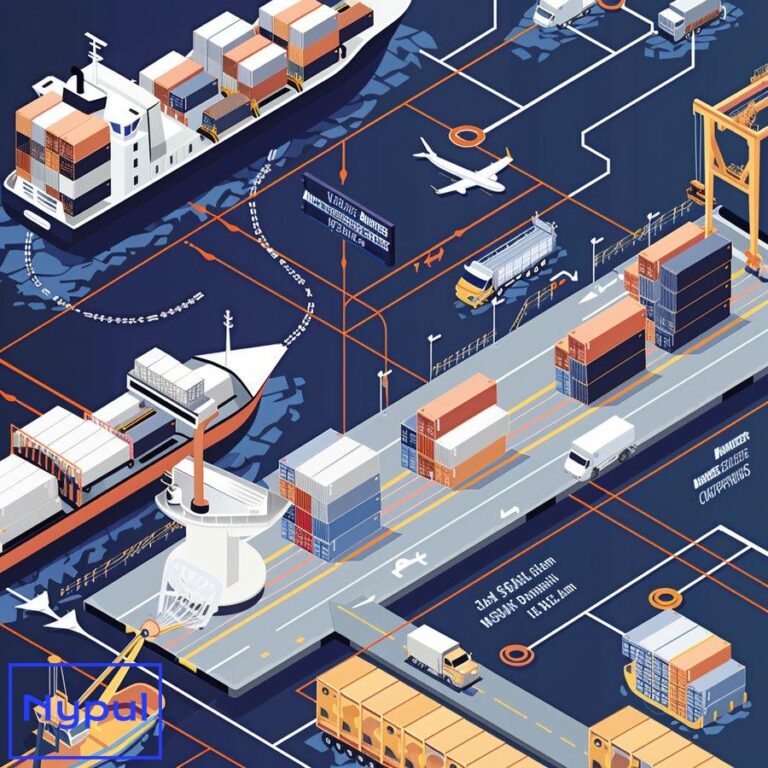How to Improve Asset Utilization Ratio
What is asset utilization ratio and why is it important?
The asset utilization ratio measures how efficiently a company uses its assets to generate revenue. This financial metric provides crucial insights into operational efficiency and management effectiveness. Calculated by dividing total revenue by average total assets, the ratio indicates the amount of revenue generated per dollar of assets.

A higher asset utilization ratio signifies that a company is leveraging its assets more productively to drive sales. Conversely, a lower ratio may indicate underutilized assets or inefficiencies in operations. For businesses aiming to maximize returns and streamline operations, understanding and optimizing this ratio is paramount.
The importance of the asset utilization ratio extends beyond mere financial analysis:
Operational Efficiency: The ratio reflects how well a company converts its investments in assets into revenue-generating activities. It helps identify areas where assets may be underutilized or where there’s potential for improvement.
Resource Allocation: By analyzing this ratio, management can make informed decisions about resource allocation. It guides decisions on whether to invest in new assets, divest underperforming ones, or optimize existing resources.
Competitive Advantage: Companies with higher asset utilization ratios often have a competitive edge. They can produce more with less, potentially leading to higher profit margins or the ability to offer more competitive pricing.
Investor Confidence: Investors and analysts use this ratio to assess a company’s operational efficiency. A consistently improving ratio can boost investor confidence and potentially increase the company’s market value.
Strategic Planning: The asset utilization ratio serves as a key performance indicator for strategic planning. It helps in setting benchmarks, identifying trends, and measuring the success of operational strategies over time.
For logistics and drayage companies, the asset utilization ratio holds particular significance. These industries rely heavily on physical assets like trucks, containers, and warehouses. Optimizing the use of these assets directly impacts profitability and service quality.
Consider a drayage company with a fleet of 100 trucks. If the company generates $10 million in annual revenue with $5 million in total assets, its asset utilization ratio would be 2.0. This means the company generates $2 in revenue for every $1 of assets. By improving this ratio, perhaps through better route planning or increased operating hours, the company could significantly boost its revenue without additional asset investment.
Understanding and improving the asset utilization ratio is not just about numbers—it’s about creating a lean, efficient operation that maximizes the value of every asset. For businesses in logistics and drayage, where margins can be tight and competition fierce, mastering this metric can be the key to long-term success and growth.
How do you calculate and interpret asset utilization ratio?
Calculating and interpreting the asset utilization ratio provides valuable insights into a company’s operational efficiency. This metric reveals how effectively a business uses its assets to generate revenue, a crucial factor in industries like logistics and drayage where asset management directly impacts profitability.

Calculation Method
The asset utilization ratio is calculated using the following formula:
Asset Utilization Ratio = Total Revenue / Average Total Assets
Where:
– Total Revenue is the company’s gross sales over a specific period (usually a year)
– Average Total Assets is the average of the total assets at the beginning and end of the period
For example, if a drayage company has:
– Total Revenue: $5,000,000
– Total Assets (beginning of year): $2,000,000
– Total Assets (end of year): $2,500,000
The calculation would be:
Average Total Assets = ($2,000,000 + $2,500,000) / 2 = $2,250,000
Asset Utilization Ratio = $5,000,000 / $2,250,000 = 2.22
This means the company generates $2.22 in revenue for every dollar of assets.
Interpretation Guidelines
Interpreting the asset utilization ratio requires context and industry benchmarks. Generally:
Higher Ratio: A higher ratio indicates more efficient asset utilization. The company is generating more revenue per dollar of assets, which is typically positive.
Lower Ratio: A lower ratio suggests less efficient asset use. The company may have underutilized assets or inefficiencies in its operations.
Industry Comparison: It’s crucial to compare the ratio to industry averages. What’s considered “good” can vary significantly between sectors.
Trend Analysis: Examining the ratio over time provides insights into the company’s operational trajectory. An improving ratio suggests increasing efficiency.
For logistics and drayage companies, interpreting the asset utilization ratio involves considering several factors:
Asset-Intensive Nature: These industries typically have significant investments in physical assets like trucks, containers, and warehouses. A lower ratio might be expected compared to less asset-intensive industries.
Seasonal Fluctuations: Many logistics operations experience seasonal peaks. The ratio may fluctuate throughout the year, necessitating analysis over longer periods.
Asset Age: Newer assets might lead to temporarily lower ratios due to higher asset values, but could improve efficiency and ratios over time.
Utilization Patterns: For a drayage company, a higher ratio might indicate efficient route planning and minimal idle time for trucks.
Maintenance Efficiency: Regular, efficient maintenance can extend asset life and improve the ratio over time by reducing the need for frequent asset replacement.
To illustrate, consider two drayage companies:
| Company | Total Revenue | Average Total Assets | Asset Utilization Ratio |
|---|---|---|---|
| A | $10,000,000 | $4,000,000 | 2.5 |
| B | $8,000,000 | $5,000,000 | 1.6 |
Company A appears more efficient in using its assets to generate revenue. However, this interpretation should consider factors like asset age, market conditions, and operational strategies.
For logistics managers and business owners, improving the asset utilization ratio often involves strategies like:
Optimizing Routes: Efficient route planning can increase revenue without additional asset investment.
Expanding Operating Hours: Utilizing assets for longer periods can boost revenue relative to asset value.
Diversifying Services: Offering additional services using existing assets can increase revenue.
Streamlining Maintenance: Efficient maintenance practices can extend asset life and reduce downtime.
Technology Integration: Implementing technologies like GPS tracking and automated scheduling can enhance asset utilization.
Calculating and interpreting the asset utilization ratio provides a powerful tool for assessing operational efficiency. For logistics and drayage companies, where asset management is critical, this metric offers valuable insights for strategic decision-making and operational improvements. By understanding and optimizing this ratio, companies can enhance their competitiveness and profitability in a challenging market.
What are the key factors affecting asset utilization?
Asset utilization in logistics and drayage operations is influenced by a complex interplay of factors. Understanding these key elements is crucial for managers and business owners seeking to optimize their operations and improve overall efficiency.
Operational Efficiency
Operational efficiency directly impacts how effectively assets are utilized. This encompasses several sub-factors:
Route Optimization: Efficient route planning minimizes idle time and maximizes the productive use of vehicles. Advanced routing software can significantly improve this aspect.
Load Management: Proper load planning ensures that vehicles are used to their full capacity, avoiding underutilization or overloading.
Turnaround Time: Quick loading and unloading processes at terminals and customer locations reduce idle time and increase asset productivity.
For instance, a drayage company implementing advanced route optimization software might see a 15% increase in daily trips per truck, directly improving asset utilization.
Market Demand and Seasonality
The fluctuating nature of demand in logistics and drayage significantly affects asset utilization:
Seasonal Peaks: Many industries experience seasonal demand fluctuations, impacting the utilization of logistics assets.
Market Volatility: Economic conditions and industry-specific factors can lead to sudden changes in demand, affecting asset usage.
Contract Stability: Long-term contracts provide stability but may lead to underutilization during off-peak periods.
A company might experience 90% asset utilization during peak seasons but struggle with 50% utilization during off-peak periods, highlighting the need for flexible asset management strategies.
Asset Management Practices
How a company manages its assets plays a crucial role in utilization:
Maintenance Schedules: Regular, preventive maintenance reduces unexpected downtime and extends asset life.
Fleet Composition: A well-balanced fleet with a mix of asset types can adapt to varying operational needs.
Asset Lifecycle Management: Timely replacement of aging assets can improve reliability and efficiency.
Implementing a predictive maintenance program could reduce vehicle downtime by up to 20%, directly improving asset availability and utilization.
Technology Integration
The role of technology in asset utilization cannot be overstated:
Telematics and GPS Tracking: Real-time tracking allows for dynamic route adjustments and improved asset allocation.
Automated Scheduling Systems: These systems can optimize asset deployment based on real-time demand and availability.
Internet of Things (IoT) Devices: Sensors can provide real-time data on asset condition and usage, enabling proactive maintenance.
Companies adopting comprehensive telematics solutions often report a 10-15% improvement in asset utilization rates.
Workforce Management
The human element significantly impacts asset utilization:
Driver Availability and Skill: Well-trained, available drivers are essential for maximizing asset use.
Dispatching Efficiency: Skilled dispatchers can optimize asset allocation in real-time.
Labor Regulations: Hours of service regulations and labor laws affect how long assets can be operated.
Proper training and management of dispatchers can lead to a 5-10% improvement in asset utilization through better real-time decision-making.
External Factors
Several external factors can impact asset utilization:
Infrastructure Quality: Poor road conditions or port congestion can lead to delays and reduced asset productivity.
Regulatory Environment: Changes in regulations, such as emissions standards, can affect how assets are used.
Fuel Prices: Fluctuations in fuel costs can influence routing decisions and overall asset utilization strategies.
For example, a company operating in an area with frequent port congestion might experience up to 30% reduction in asset utilization during peak congestion periods.
Customer Relationships and Service Agreements
The nature of customer relationships and service agreements plays a crucial role:
Appointment Scheduling: Efficient appointment systems can reduce wait times and improve asset turnover.
Service Level Agreements (SLAs): Strict SLAs may require maintaining excess capacity, affecting overall utilization.
Customer Collaboration: Close collaboration with customers can lead to more predictable demand patterns and better asset utilization.
Companies with strong customer collaboration programs often report 10-20% improvements in asset utilization through better demand forecasting and scheduling.
Understanding and managing these key factors is essential for optimizing asset utilization in logistics and drayage operations. By addressing each of these areas, companies can significantly improve their operational efficiency, reduce costs, and enhance their competitive position in the market. The interplay between these factors underscores the need for a holistic approach to asset management, combining strategic planning, technological adoption, and operational excellence.
How can inventory management improve asset utilization?

Effective inventory management plays a crucial role in enhancing asset utilization, particularly in logistics and drayage operations. By optimizing inventory practices, companies can significantly improve the efficiency of their assets, leading to better overall performance and profitability.
Just-in-Time (JIT) Inventory
Implementing a Just-in-Time inventory system can dramatically improve asset utilization:
Reduced Storage Requirements: JIT minimizes the need for large warehouses, allowing companies to allocate resources to more productive assets.
Improved Cash Flow: Less capital tied up in inventory means more resources available for asset optimization.
Faster Turnaround: JIT encourages quicker movement of goods, increasing the utilization of transportation assets.
For example, a drayage company implementing JIT might reduce its warehouse space by 30%, allowing for investment in additional trucks or technology to improve asset utilization.
Inventory Forecasting and Demand Planning
Accurate forecasting and demand planning are essential for optimizing asset utilization:
Predictive Analytics: Using historical data and market trends to forecast demand allows for more efficient asset allocation.
Seasonal Adjustments: Understanding seasonal fluctuations helps in planning asset deployment and maintenance schedules.
Collaborative Planning: Working closely with customers to understand their inventory needs can lead to more efficient use of logistics assets.
Companies using advanced forecasting tools often report a 15-20% improvement in asset utilization rates due to better alignment with demand patterns.
Cross-Docking Strategies
Cross-docking can significantly enhance asset utilization in logistics operations:
Reduced Storage Time: Goods move quickly from inbound to outbound transportation, minimizing warehouse usage.
Increased Vehicle Utilization: Faster turnaround times mean vehicles spend less time idle at warehouses.
Optimized Load Planning: Cross-docking facilitates more efficient load consolidation, improving vehicle capacity utilization.
Implementing cross-docking can lead to a 25% reduction in warehouse space requirements and a 20% increase in vehicle utilization.
Inventory Visibility and Real-Time Tracking
Enhanced visibility into inventory levels and movements is crucial for asset optimization:
RFID and IoT Technologies: These technologies provide real-time tracking of inventory, enabling more responsive asset deployment.
Integrated Systems: Connecting inventory management systems with transportation management systems allows for dynamic asset allocation.
Data-Driven Decision Making: Real-time inventory data enables quick adjustments to asset deployment strategies.
Companies implementing comprehensive inventory visibility solutions often see a 10-15% improvement in asset utilization through more responsive and accurate decision-making.
Vendor-Managed Inventory (VMI)
VMI programs can significantly impact asset utilization:
Streamlined Supply Chain: Suppliers manage inventory levels, reducing the burden on logistics assets.
Reduced Order Variability: VMI typically leads to more consistent order patterns, allowing for better asset planning.
Improved Forecasting: Close collaboration with suppliers enhances demand forecasting accuracy.
Implementing VMI has been shown to reduce inventory levels by up to 30% while improving asset utilization by 15-20% due to more consistent and predictable inventory movements.
Inventory Optimization Techniques
Various optimization techniques can contribute to improved asset utilization:
ABC Analysis: Categorizing inventory based on value and turnover helps in prioritizing asset allocation.
Economic Order Quantity (EOQ): Determining optimal order quantities can lead to more efficient use of transportation and storage assets.
Cycle Counting: Regular cycle counts reduce the need for disruptive full inventory counts, improving asset availability.
Companies implementing comprehensive inventory optimization techniques often report a 10-15% improvement in overall asset utilization.
Reverse Logistics Management
Efficient handling of returns and reverse logistics can significantly impact asset utilization:
Streamlined Return Processes: Efficient return handling reduces the time assets are tied up in reverse logistics.
Refurbishment and Resale: Quick processing of returned items for resale or refurbishment improves inventory turnover and asset utilization.
Integrated Forward and Reverse Logistics: Combining outbound and return shipments can improve vehicle utilization rates.
Implementing an efficient reverse logistics system can lead to a 20% improvement in asset utilization for vehicles involved in return processes.
Inventory Performance Metrics
Establishing and monitoring key inventory performance metrics is crucial for improving asset utilization:
| Metric | Description | Impact on Asset Utilization |
|---|---|---|
| Inventory Turnover Ratio | Measures how many times inventory is sold and replaced in a period | Higher ratio indicates more efficient use of storage and transportation assets |
| Days Sales of Inventory (DSI) | Average number of days it takes to turn inventory into sales | Lower DSI suggests more efficient use of storage assets |
| Perfect Order Rate | Percentage of orders delivered on time, in full, and error-free | Higher rate indicates more efficient use of transportation assets |
| Carrying Cost of Inventory | Total cost of holding inventory | Lower costs can free up resources for more productive asset investments |
Regularly tracking and improving these metrics can lead to a 10-15% improvement in overall asset utilization rates.
Effective inventory management is a powerful lever for improving asset utilization in logistics and drayage operations. By implementing strategies like Just-in-Time inventory, cross-docking, and leveraging advanced technologies for real-time tracking and forecasting, companies can significantly enhance the efficiency of their assets. The key lies in viewing inventory management not as an isolated function but as an integral part of the overall asset utilization strategy. Through this integrated approach, businesses can achieve substantial improvements in operational efficiency, cost reduction, and customer satisfaction.
What strategies can optimize equipment efficiency?

Optimizing equipment efficiency is crucial for maximizing asset utilization in logistics and drayage operations. Implementing effective strategies can lead to significant improvements in productivity, cost reduction, and overall operational performance.
Preventive Maintenance Programs
Implementing robust preventive maintenance programs is fundamental to equipment efficiency:
Scheduled Maintenance: Regular, planned maintenance reduces unexpected breakdowns and extends equipment life.
Predictive Maintenance: Using data and analytics to predict when maintenance is needed, rather than relying on fixed schedules.
Condition-Based Monitoring: Utilizing sensors and IoT devices to monitor equipment health in real-time.
Companies implementing comprehensive preventive maintenance programs often see a 30-40% reduction in equipment downtime and a 20-25% increase in equipment lifespan.




